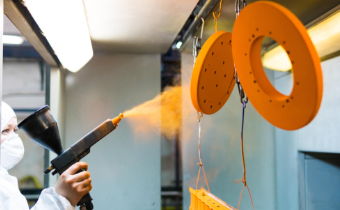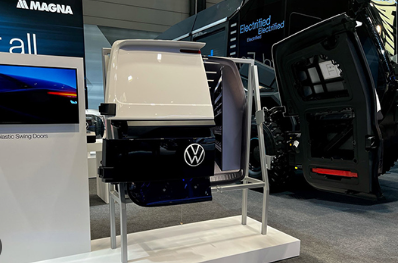Use premium paper, check printer settings, and keep your printer in good condition to improve daily printing outcomes.Ask yourself, before ordering: exactly are you printing, and why? A lot of flyers for a neighbourhood event won’t require the same paper or finish as a set of wedding invites. Knowing the goal helps you decide on finishes, sizes, and materials, so you avoid spending more than you should.
For a reason, most printing companies provide several paper weights and textures. While a matte texture would be ideal if you wish visitors to write on your business cards, thicker cardboard can make them feel more premium. And consider colour; what looks great on screen does not necessarily translate precisely to paper.
Table of Reference
Don’t Neglect the Proofing Period. You would be astonished to find how many people push “submit” on an order without reviewing the final version. One whole print job can be ruined by a minor error or colour mismatch. Before proceeding, always seek for a proof, even digital one. This last stage allows you to find anything that just seems off, misaligned components, or layout problems.
Print a sample at home
Print a sample at home on your printer if at all possible. It will enable you to find clear problems with font size, general layout, or spacing, even if the quality is different. Although all-in-one printers seem handy, if you run a business or have particular print needs, investing in a specialised photo printer, label printer, or wide-format printer may produce better results. Avoid inexpensive or third-party cartridges that could leak or clog printheads using compatible ink or toner. Stick with OEM (Original Equipment Manufacturer) or premium compatible substitutes tested for your printer model.
Sort Files Based on Type and Formatting Attention
Sending the wrong kind of file is one of the quickest ways to postpone a print job. Most printing companies will want PDFs, including high-resolution photos and embedded fonts. If you are dealing with a designer, be sure they are delivering print-ready materials rather than merely something taken from Canva or PowerPoint.
You also need to review bleed settings. Your design must stretch beyond the trim line if it runs to the edge of the page to prevent white borders. The appearance of your finished work will be much improved by this small detail.
Create Questions If You’re Not Sure
Not everyone is a print specialist; you are not required to be either. Reputable companies are pleased to address questions before you commit. Ask if you are unsure about paper stock, turnaround times, or whether your file is printable. Clarification is preferable to assuming and then finding out disappointedly.
If the order is significant or huge, perhaps it is even worth personally consulting someone. Many discover that a brief talk saves time and tension down the road.
Think Outside of Only the Cost.
Going straight for the least expensive choice is simple, particularly if you are printing in volume. Low cost, though, does not always translate into high value. See reviews, turnaround times, and whether they charge extra for things like design changes or proofing.
Cutting corners could damage more than it benefits if you are ordering something that reflects your brand, such as brochures, signage, or product packaging. Rather, search for dependable printing services for limited runs or customised work that provide you more control over quality without running afoul of the budget.
Know When to Switch Online Rather
Not every initiative has to make sense on paper. Sometimes the better option is digital substitutes. Have an announcement about a last-minute event? Email newsletters or social media may be quicker and more successful than handcrafted posters. QR codes or app-based technologies let you digitise even menus, loyalty cards, or brochures.
All of it is about matching the approach to the message. Go for it if you still enjoy the tactile sensation of print, but, don’t discount digital simply because you’re used to doing things the old-fashioned.
See Out for These Typical Errors.
A few traps pop up repeatedly. small, difficult to see text. Logos that become hazy during resizing. Selecting glossy paper for something that needs to be written on. Once you know these blunders, they are easy to prevent.
Another major one is not allowing adequate time for departure. Usually costing more, rush jobs give less opportunity for evaluation or correction. Try to make prior plans, particularly for holidays or the beginning of a school year when traffic is heavy.
Get Creative, but Stay Practical.
There are plenty of strategies to make your print products unique. Death cuts, foil stamping, embossing—all add flair. Check that it serves the intended use, though. Though it should not make the work more difficult to use or read, a strong design might catch attention.
Need ideas? Invest some time looking at design galleries or learning how to create a distinctive business card. Sometimes the best ideas come from observing what others are doing, then adding your twist on it.
When it comes to printing, preparation usually determines the best results. You can save time, money, and aggravation by carefully considering things, asking the appropriate questions, and somewhat planning. Whether you’re doing a basic print job or diving fully into a creative endeavour, make sure it fits you, not only the printer.
Use the appropriate printer for the task.
Whether you run a print shop, manage a home office, or work in a corporate environment, the daily printing quality will greatly impact your expenses, professionalism, and output. Most people assume print management is as easy as hitting “Print,” therefore undervaluing its significance. Still, reaching the best results calls for a mix of proactive upkeep, contemporary technologies, and creative ideas.
We shall discuss clever tactics in this post that improve daily printing outcomes, therefore guaranteeing better output, faster performance, and less waste. Choosing a suitable printer for your printing requirements is the first and maybe most important approach.
Inkjet printers provide better colour accuracy and detail if you print high-quality photographs or photos compared to laser printers. Laser printers are speedier and less expensive for vast numbers of black-and- white documents.
1. Although all-in-one printers
Seems handy, if you run a business or have particular print needs, investing in a specialised photo printer, label printer, or wide-format printer may produce better results.
DPI, or dots per inch, denotes superior resolution. If excellent quality is your main concern, look for printers with 1200 x 1200 DPI or greater.
2. Use High-Quality Paper and Ink:
Even the best printer’s capabilities might be compromised by inferior materials. Here is a guide on wise material selection: Paper Type Matters: Choose the appropriate paper for the kind of printing you do. For photo prints, for example, glossy paper improves quality; matte paper is preferable for text-heavy publications.
Heavier paper seems more professional and less likely to distort and bleed. Avoid inexpensive or third-party cartridges that could leak or clog printheads using compatible ink or toner. Stick with OEM (Original Equipment Manufacturer) or premium compatible substitutes tested for your printer model Daily Printing.
3. Refine Printer Settings
While many consumers keep default settings, customising print settings will greatly enhance results: For critical papers, choose “Best” or “High Quality” Print Mode. Designed for internal use only, “draft” mode saves ink. To guarantee better colour consistency, change the colour settings of your printer to match your screen. Print Preview always helps you to avoid needless errors by always reviewing the layout, margins, and content.
4. Maintaining Your Printer’s Cleanliness
Often disregarded until an issue develops is maintenance. Constant performance is guaranteed by regular maintenance: Clogged nozzles produce faded prints and streaks. Most printers include an auto-cleaning function; use it a few weeks apart Daily Printing.
Maintaining cleanliness
Maintaining the cleanliness of the internal rollers and paper tray will help prevent smearing or paper jams. Manufacturers publish firmware updates to correct flaws or boost performance. Maintaining ideal printer condition depends on your being current. Use print management tools. Especially in corporate settings, software can greatly improve your control over printing operations Daily Printing.
Print queue management helps to prevent overload and more effectively arranges duties. Track who prints what and how often to help to reduce pointless consumption. Solutions that simplify wireless and remote printing include Google Cloud Print or AirPrint.
Six: Coach Your Family or Team
Different handling can lower performance if several people use the printer. A quick user manual or training session will help: Teach best practices, including how to properly handle jams, avoid overfilling trays, and load paper.
Promote digital note-taking, file sharing, or preprint previewing as paperless substitutes. Combine Tasks in Printing: Combine your papers into batch tasks rather than printing one at a time. Frequent starts and pauses strain the printer’s mechanics more than they would otherwise. Groups of tasks help to improve workflow by saving time and reducing mistakes.
Track Tone and Ink Levels
Running out of ink middle-job wastes time and paper. Intelligent monitoring helps to prevent disruptions: Use printer software to get alerted when supplies run short. Create a refill strategy. Plan to maintain a supply of key cartridges on hand or set up automatic reordering. Using print templates and styles will help to greatly increase uniformity and quality. Pre-designed templates guarantee alignment, spacing, and design best fit for print. Standardise Fonts and Margins to help documents seem consistent and polished.
Minish Waste Using Duplex and Eco-Modes
Efficiency doesn’t imply sacrificing quality. Furthermore, intelligence is environmentally friendly surroundings: Print on both sides of the page to help you conserve paper with duplex printing. Most current printers have a toner-saving mode, which lowers toner use for less important papers. Choose environmentally friendly paper varieties without compromising quality from recycled sources. Not only does investing in costly equipment help to improve your daily printing output. It’s about the wise use of the tools and resources at hand.

Intelligent Strategies to Improve Daily Printing Results
Final thought
Approach printing as a process instead of a one-click activity to open chances for savings, higher quality, and more professionalism. From paper choice and maintenance to software and print behavior, every component adds to the outcome. In essence, three pillars—efficiency, consistency, and quality—rule under intelligent printing processes. Applying even a couple of these techniques will produce noticeably improved results, whether your daily output consists of a few pages or hundreds of documents. Printers should be treated as vital instruments rather than background equipment, as they get more and more included in our digital processes. How should one avoid paper jams? Use the correct type and size of paper always; avoid overloading the tray; and ensure the paper is correctly positioned. Also, maintain internal printer cleanliness.
Conclusion
Is cloud printing safe? While most cloud printing companies employ encryption, always utilise trustworthy networks and updated software to lower data breach risk. Why, even after I changed the cartridge, does my printer report being low on ink? One could find a chip recognition mistake here. If at all possible, try reinserting the cartridge, turning on the printer, or employing a chip reset tool. Given what I see on my screen, how can I match printed colours?
Verify your monitor’s calibration by using colour calibration instruments. Choose also the right print profile and paper type in the options. For best outcomes, should one use the brand-owned paper? Though not always, buying paper suggested by the manufacturer of your printer usually guarantees the best print quality and lowers the possibility of problems. Using these techniques guarantees a better experience generally, increases production, lowers environmental impact, and improves print quality in addition to other things.
FQS
1. How often should I run my printer?
Regular users should at least once a month clean their printer—especially the printheads and rollers. Once every two weeks is best if you print often.
2. Can I use third-party ink cartridges?
Indeed, however carefully. Choose respectable outside brands known for compatibility. Bad quality cartridges could ruin your printer or lower print quality.
3. Why might lines or faded sections appear in my prints?
Usually, this results from low ink levels or blocked printheads. Check the ink cartridges after running a run of printhead cleaning.
4. How does turning off my printer while not in use seem better?
Turning off the printer will help to save electricity if you will be using it for several days. Regular power cycling can, however, over time, wear out various internal components.
5. How may I save printing costs without compromising quality?
For internal papers, use draft mode; duplex printing will help to save paper and make wise investments in reasonably priced, high-yielding cartridges. Steer clear of needless colour printing too Daily Printing.





Leave a Reply